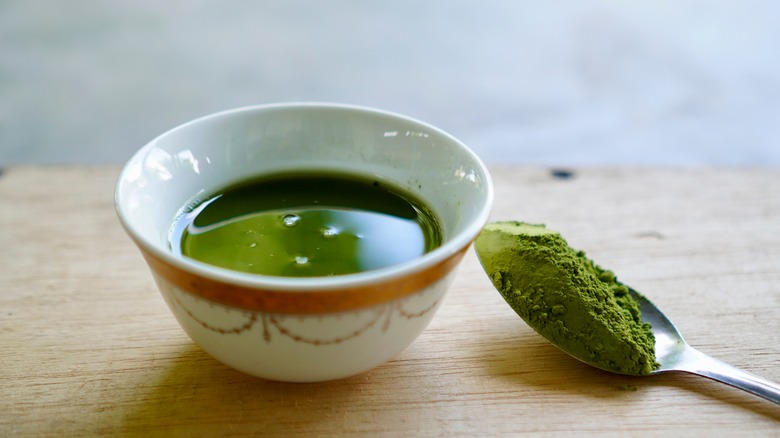You Can Make Your Own Homemade Matcha Powder With This Common Kitchen Tool
We may receive a commission on purchases made from links.
Many qualities separate matcha from other types of green tea, with its fine texture an especially prominent distinction. While many teas are steeped whole, matcha leaves are traditionally ground using stone mills, creating a very fine and slightly hydrophobic powder. You'll typically find matcha sold in this pulverized form, ready for whisking into delicious matcha lattes that taste like spring or other applications.
Yet, if you're keen to extend the tea's shelf life, preserve its flavor for longer, and dig into the intricacies of matcha production, then it's even possible to grind matcha at home. And for the most basic textural results, you don't even need fancy gear: Simply a coffee grinder will do. A classic blade model will be able to make drinkable matcha, but for enhanced textural consistency, the burr design is a better choice. Just note that you'll need to achieve an extra-fine texture, so reach for a model built for espresso rather than coarser grind sizes or spices. And you could also employ a similarly-designed tea mill to create such a result. Sift the powder after to ensure further uniformity, and a matcha that's typically sold as culinary grade will result.
Using a coffee grinder for matcha comes with limitations
Grinding matcha is more than just a simple processing step; it's a critical part of tea-making. This pulverizing step occurs once you have tencha on hand: A processed green tea that's steamed, oven-dried, and sifted off impurities. Since tencha is shelf-stable, many producers will store their bulk of matcha in this form and grind the leaves right before distribution to ensure freshness; a perk of also grinding matcha at home.
However, transferring the grinding into your own hands comes with its own difficulties. Matcha grinding is a delicate process, and any heat generated at the time can deteriorate the plant's flavors. Furthermore, achieving the ideal soft, uniform texture is hard: Even modern industrial machines don't always attain perfectly powdered matcha. Instead, the traditional, extra-laborious route involves methodically rotating a stone mill, processing only small amounts of matcha at a time. Used for the highest quality tea, it's a tool that you can buy for home use to grind the best matcha, but at a steep price.
So unfortunately, it's tough to achieve sweet and smooth matcha with a coffee grinder, and when coarse, the tea typically comes with bitter flavors. You can start by reaching for a hand-powered burr model like the JavaPresse Manual Stainless Steel Coffee Grinder rather than an electric one, as this will minimize some of the excess heat. And remember there's nothing wrong with enjoying your home-ground tea in creative ways like a matcha pistachio popsicle to mask any unpleasant flavors, reserving the highest quality powders for sipping delicate drinks to store-bought matcha.

